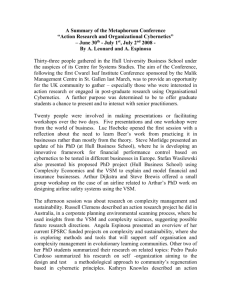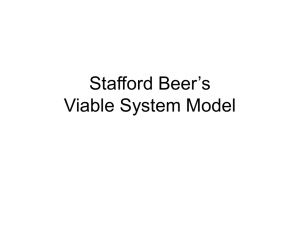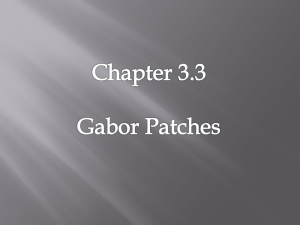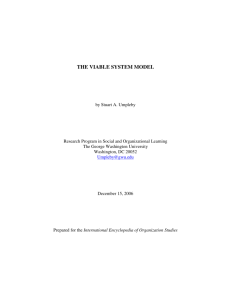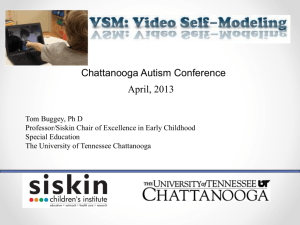Visual Sensory Memory: The Contrast of Visual Gratings
advertisement
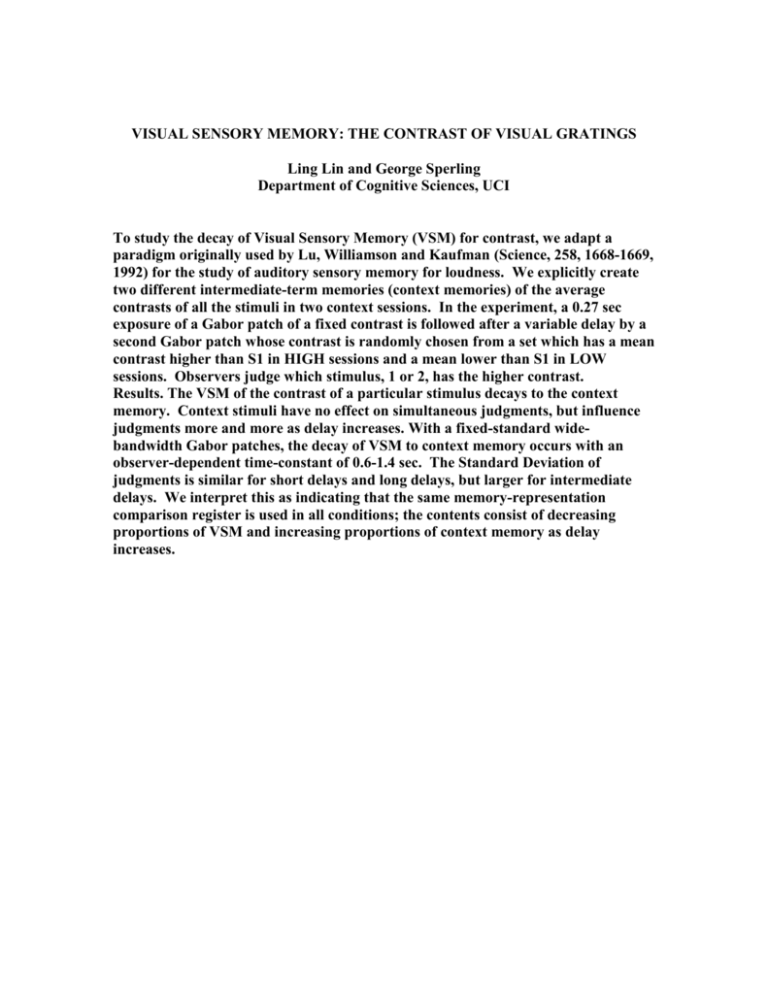
VISUAL SENSORY MEMORY: THE CONTRAST OF VISUAL GRATINGS Ling Lin and George Sperling Department of Cognitive Sciences, UCI To study the decay of Visual Sensory Memory (VSM) for contrast, we adapt a paradigm originally used by Lu, Williamson and Kaufman (Science, 258, 1668-1669, 1992) for the study of auditory sensory memory for loudness. We explicitly create two different intermediate-term memories (context memories) of the average contrasts of all the stimuli in two context sessions. In the experiment, a 0.27 sec exposure of a Gabor patch of a fixed contrast is followed after a variable delay by a second Gabor patch whose contrast is randomly chosen from a set which has a mean contrast higher than S1 in HIGH sessions and a mean lower than S1 in LOW sessions. Observers judge which stimulus, 1 or 2, has the higher contrast. Results. The VSM of the contrast of a particular stimulus decays to the context memory. Context stimuli have no effect on simultaneous judgments, but influence judgments more and more as delay increases. With a fixed-standard widebandwidth Gabor patches, the decay of VSM to context memory occurs with an observer-dependent time-constant of 0.6-1.4 sec. The Standard Deviation of judgments is similar for short delays and long delays, but larger for intermediate delays. We interpret this as indicating that the same memory-representation comparison register is used in all conditions; the contents consist of decreasing proportions of VSM and increasing proportions of context memory as delay increases.



